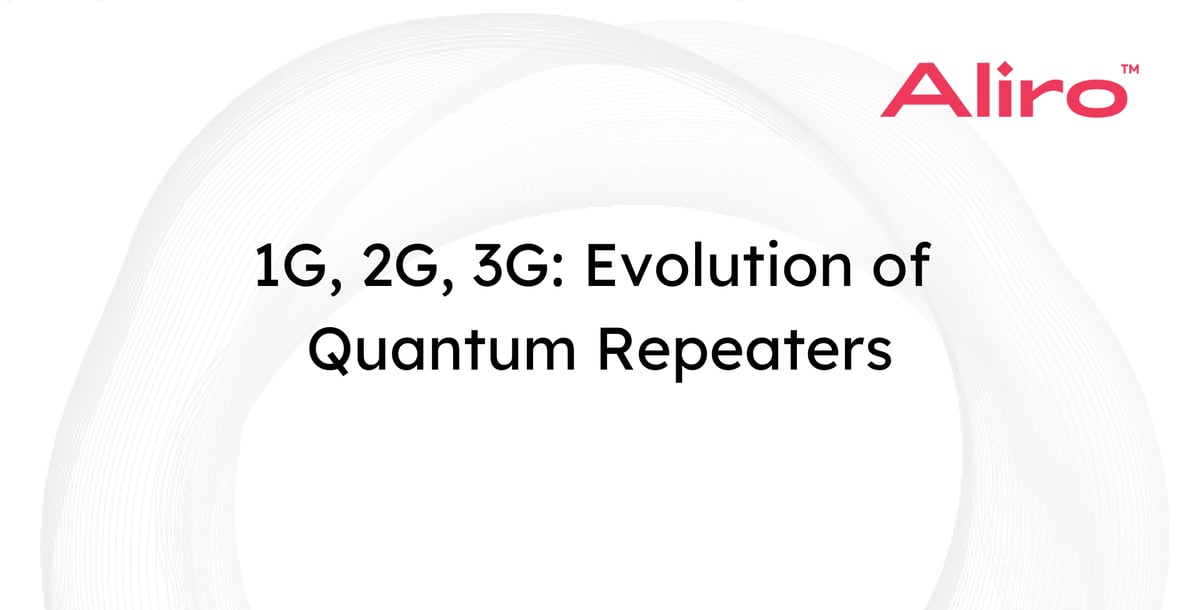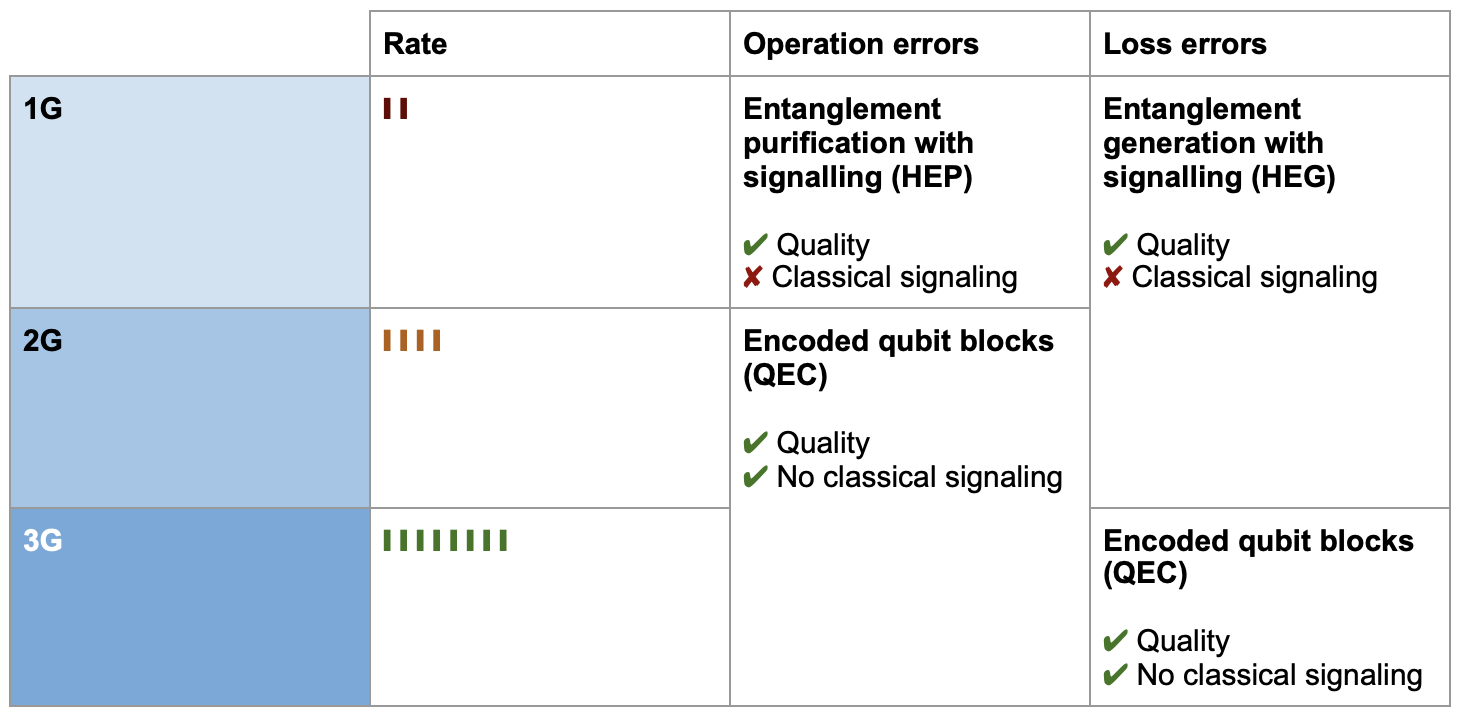
As the quantum internet develops and underlying technology improves, quantum repeaters are expected to undergo qualitative changes to improve performance. Initial quantum repeaters will rely on protocols such as entanglement swapping and purification. These methods offer the best chance to build long-distance networks in the near term, with high error rates and short memory times. As error rates improve, repeater technology will flow smoothly into new methods that take advantage of improved fundamentals to offer higher performance.
Noise is inevitable on quantum networks due to the fragile nature of quantum states. To compensate, quantum repeaters employ protocols that detect and correct for errors. There are two main sources of errors on quantum networks:
- Loss errors: Qubits are lost while traveling on connections.
- Operation errors: Noisy operations reduce the quality of qubits on repeaters and endpoints.
The three generations of repeaters differ primarily in the way that they manage these two types of errors. The choice of repeater is context dependent. Different repeater protocols will succeed in different situations, depending on the available hardware and bandwidth requirements.
 The three generations of repeaters are distinguished by their methods of handling operation errors and loss errors.
The three generations of repeaters are distinguished by their methods of handling operation errors and loss errors.
First generation: The power of heralding
The first generation of quantum repeaters will cope with high error rates on near-term devices using a technique called "heralding." Networks can ensure high quality by testing performance in real-time and only accepting when a protocol succeeds. In order to let the rest of the network know that it can proceed, the network needs to send a classical signal indicating success. This classical success signal is known as "heralding."
First generation repeaters use heralding to correct for both operation errors and loss errors:
- Loss errors: Heralded entanglement generation guarantees successful entanglement by repeating attempts until a classical signal confirms entanglement has succeeded. A classical message must be sent to both end-points to indicate this success.
- Operation errors: Heralded entanglement purification consumes several low-quality entangled pairs to produce a single high quality pair. Again, classical messages are needed to coordinate with end-points.
Heralding is a powerful technique for maintaining entanglement generation quality, but it brings a cost: bandwidth. Bandwidth on a quantum network is determined by the number of entangled pairs that can be generated in a given amount of time. Heralding messages slow down quantum networks, because endpoints must wait to receive the classical messages. In addition, it means that longer distances will result in lower bandwidth.
Second generation: Introducing quantum error correction
Quantum error correction (QEC) offers an alternative to entanglement purification. QEC produces a single high quality pair by encoding it in a larger number pairs. This overhead has an impact on rate, but does not require the round-trip signaling needed for heralded entanglement purification. This enables significant bandwidth increases. QEC requires high-quality hardware, making it infeasible for near-term networks.
Third generation: Scaling the quantum internet
Finally, QEC can also be applied to manage loss errors. Instead of iteratively building entanglement followed by teleportation, qubits can be encoded directly into clusters and passed across a network. This effectively removes the need for heralding for either loss or operation errors. QEC for loss errors requires even higher hardware performance, but will unlock the full scaling potential of the quantum internet for a variety of applications.
Where are we now?
Today, researchers are focused on the development of first generation repeaters using heralded entanglement generation and purification. Just this year, we saw great strides towards the development of networks using first generation repeaters. The creation of 1G repeaters is likely to be transformational for quantum communication, with applications across secure communication and high-performance computing (HPC). While we focus on progress towards near-term networks, it's important to keep in mind the bigger picture. Knowing where quantum repeater technology is headed will help to design future-ready networks today.
